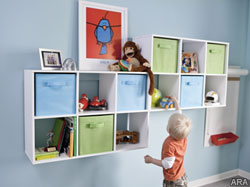If you're doing the honors this season, you can start the New Year off with a party that will be as memorable as it is free of annoying hiccups and problems.
The Planning
Whether it's a New Year's party, a graduation party or a birthday, great parties are the result of good planning:
- Guest list - Invite guests well in advance. Friends and family plan their holiday outings way ahead of time, so give your guests six to eight weeks' notice. Provide an RSVP deadline, but don't rely on hearing back from everyone. Wait a couple of weeks and send follow up emails or call people you haven't heard from. Once you do have a preliminary list of attendees, there are bound to be some changes before the big night. Accept cancellations, additions and no shows with good grace.
- Invitation strategy - When you put together an invitation, you have some options. You can send your invitation electronically or through the mail. Snail mail invites set a more formal tone, but they are also more expensive and time consuming. The formality of the party and average age of your guests may be the best determiner of how to draft the invitation.
- The details - Having a good plan for the party before you send out invitations is a great idea. If you can outline the party's approximate time and duration, whether or not guests are expected to bring their own alcoholic beverages and other particulars, it will save you having to relay information to each guest individually. It's also a good idea to provide directions to the location with a map and some suggestions for parking.
The more you can relay now, the less confusion there will be later in the planning process. One of the really nice things about doing the majority of the planning before you send out the invites is that it forces you to take a practical approach using specifics like how many people you can comfortably entertain, how elaborate you want the food options to be, whether or not there will be children in attendance and other important considerations.
The Layout
The furniture in your home may be arranged perfectly to accommodate your family and a couple of guests. When you're entertaining a crowd, though, some modifications may be in order:
- Make way - To open up the space and make it mingle friendly, anticipate the way traffic will flow from the entrance of your home to the food and drink areas, the bathrooms, the coatroom and back to the entry. Now clear as much space as you can to accommodate and encourage that traffic flow pattern.
- Protect your breakables - No one expects to have an accident while visiting a friend's home, but mishaps do happen. To avoid ending your party on a sour note, stow your treasured breakables in a safe location for the evening. If Aunt Edna's vase is irreplaceable, make sure it doesn't fall prey to a tipsy reveler by putting it away.
- Designate a coatroom - In cold climates, guests start shedding outerwear as soon as they arrive. Make sure you have an accessible spot prepared to receive coats, hostess gifts and purses for the duration of the party. Keeping everything together will make it easier for your guests to take their leave gracefully at the end of the evening, too.
- Keep them moving - Although you may be serving food, keeping the portions small and easy to eat will allow guests to move around while they're nibbling. This has a couple of good benefits to the host: It encourages conversation and eliminates the need for concurrent seating for everyone. This doesn't mean you shouldn't employ more seating than your home usually contains. Extra chairs and a folding table or two are always a good idea. When you make sitting down an option rather than a necessity, though, you keep the party lively.
The Details
In the end, you can strategize a perfect party and have it fall apart because you neglected a few important details:
- Music - The music often sets the tone for the celebration. You know the style of your party and the likely makeup of your guest list. Now is the time to choose the perfect music to get people in a party mood. Hearing is one of the most evocative senses, so don't miss this opportunity to make the most of your musical selections. If this is way out of your comfort zone, there are many themed music CDs based on specific artists, decades and musical styles that can help.
- Join in - As the host, it's easy to become so engrossed in the details that you forget to enjoy the celebration. Get out of the kitchen (or from behind the bar) and mingle. At midnight, everyone will be directing a grateful glance your way. Don't miss it.
- Find the fun - Parties are a little like big weather events. You can plan for them, but your predictions are almost never completely accurate. Some parties fall flat and others are simply magic. As you navigate your party, look for magical moments and try to bring others in on a joke or reminiscence. It's one way to create party momentum without working at it too hard.
- Winding down - If you've established a timeline for the party in the invitation, your guests will know when it's time to leave. If there are some stragglers, you can give them polite encouragement by turning down the music or turning up the lights. Before people start reaching for their car keys, though, locate alternative transportation for anyone who may have indulged in a little too much holiday cheer.
Source: Sara Elliot, idealhomegarden.com









